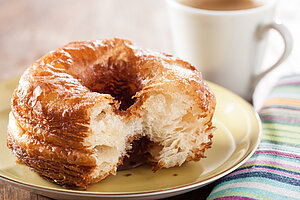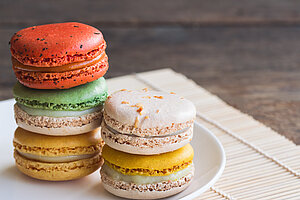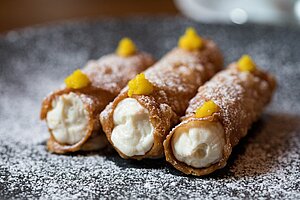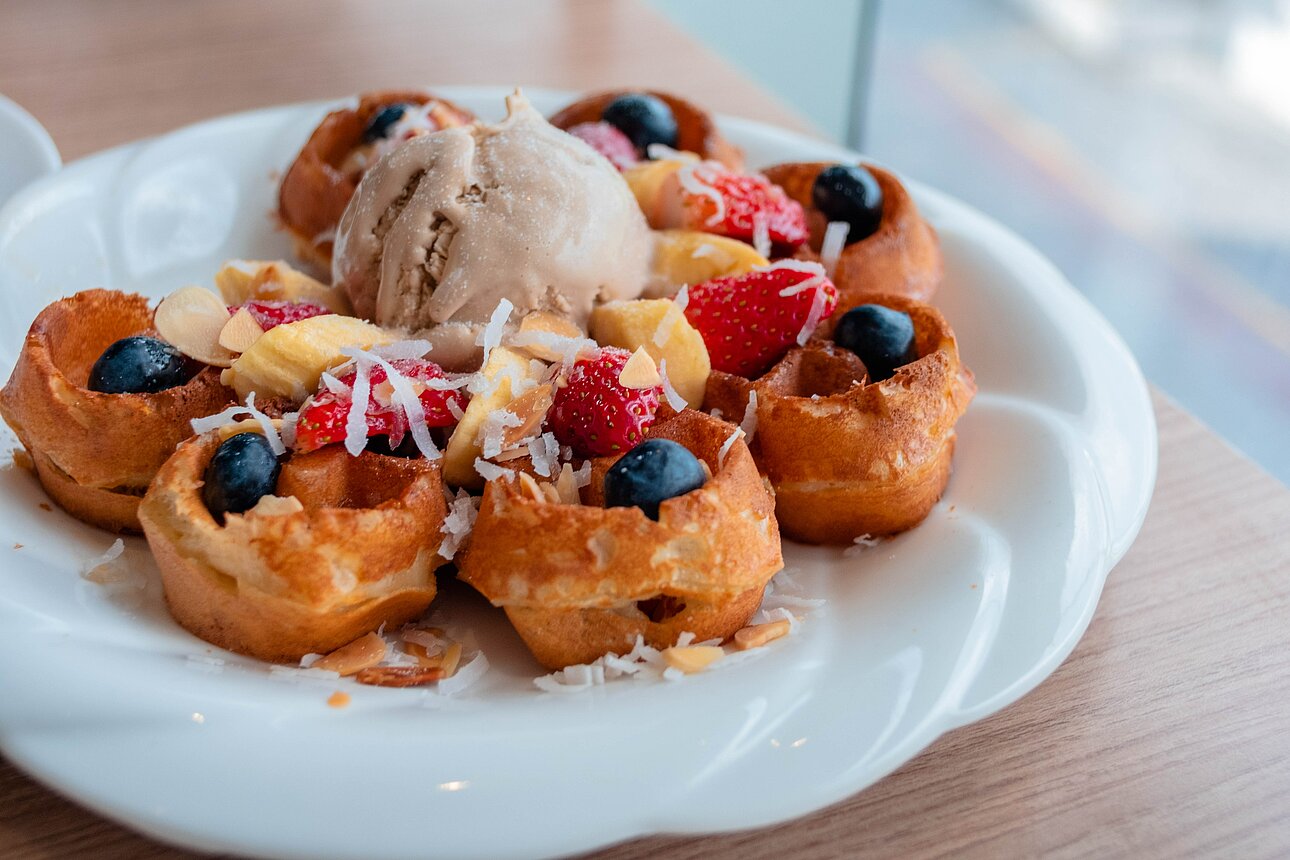People are naturally drawn to sweet and salty flavor profiles. Research has shown that the human tongue perceives these flavors more intensely than bitter, sour, or umami.
When you add in the fact that consuming sugar triggers the release of feel-good dopamine in the brain, it’s no surprise that consumers have trouble saying no to delectable pastries. The human brain also craves novelty — studies show that neural activity increases when people are exposed to new experiences.
Put all this together, and you can see why pastry fusion is so popular. How can bakeries use this knowledge for the good of mankind — or at least to tempt new and regular customers? Here are a few trends in pastry fusion to get those sweet, creative juices flowing.
 Cronuts
Cronuts
Goodbye, cruffins; hello, cronuts! These tasty hybrids are a revelation of tantalizing textures made with pastry dough formed into hoops to create the classic doughnut shape.
Instead of baking them like a croissant, however, these rings are deep fried, resulting in a light, flaky pillow of a dessert with a delicate, crispy exterior. Topped with sugar or glaze and enhanced with a range of fillings, the cronut delivers the best of both breads.
Related: Fusion, Chaos, and New Ways of Crafting Cuisine
Other Donut Desserts
Fluffy, fried dough serves as the perfect neutral base for all kinds of flavors, so donut crossovers with other desserts are a natural fit.
Consider gulab jamun. This Persian confection, which is enjoyed across central Asia, starts with a dough formed from khoya (evaporated milk solids) that is fried and then soaked in a flavored syrup featuring rose water and cardamom. The donut version gets a glaze with the same flavors.
In the U.K., you can find sticky toffee pudding donuts. The original dessert is a date cake soaked in warm toffee sauce and topped with cream or custard.
The Bread Ahead Bakery in London recently started offering an elevated option featuring a raised doughnut coated in sugar, filled with salted caramel cream, and topped with a bite-sized chunk of sticky cake, followed by a generous drizzle of sticky toffee sauce.
Stay in the loop and never miss out on exclusive updates, insights and more! Sign up for our newsletter today and be the first to know.
 Mochi Macarons
Mochi Macarons
There’s not much separating the concept of mochi and macarons. Mochi dough, made from sweet rice flour, serves as a sweet delivery vehicle for fillings, typically ice cream. Macarons feature meringue cookies made of almond flour with a creamy filling sandwiched between two cookies.
How do these two desserts come together into one enchanting mouthful? All you have to do is make your meringue cookies and create flavored mochi dough for the filling in place of classic buttercream. Mochi flavors like green tea, yuzu, and black sesame add wafu appeal to this French confection.
 Holy Fusion Cannoli
Holy Fusion Cannoli
Crispy, fried cannoli shells are traditionally filled with soft ricotta or mascarpone cheese sweetened with sugar and vanilla, along with a range of complementary ingredients (chocolate chips, pistachios, candied fruits, etc.). The shells, however, could be filled with almost anything, making them an ideal fusion facilitator.
Filipino creations might use ube, red bean, and calamansi paste as a filling, while shrikhand cannoli pairs crispy shells with a filling of yogurt and sugar popular in India. Cannoli Napoleon, on the other hand, retains the sheets of puff pastry found in the French dessert but substitutes cannoli filling for the typical whipped pastry cream.
Sweet Satisfaction
Giving people what they want isn’t hard when there’s sugar involved, but for fusion pastry, in particular, the trick is to merge the best of both desserts into a single, irresistible innovation. Take advantage of holidays — Bastille Day with croissant crossovers, National Doughnut Day, etc. — to capitalize on new offerings.
Ready to dive deeper into our products, uncover the latest trends, and gain valuable insights? Reach out to us here today to discover more!





